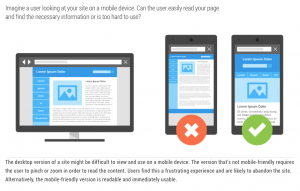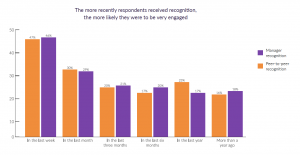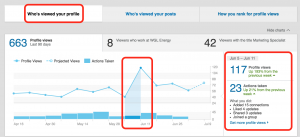From contextual audiences to identity resolution to customer journey analytics.
MarTech’s daily brief features daily insights, news, tips, and essential bits of wisdom for today’s digital marketer. If you would like to read this before the rest of the internet does, sign up here to get it delivered to your inbox daily.
Good morning, Marketers, thank you for paying closer attention to my purchases and intent.
As a business journalist who’s reported on brand news for many years, I can say that digital targeting has finally turned a corner.
It used to be that any time I researched a brand I was reporting on, I’d get ads from them for months and months. Analytics and insights on intent have finally gotten granular enough to rule out the case of the B2B news editor. Well done!
But when I’m watching Sunday news shows over OTT and reading a book on my couch, can you please block that Slack commercial with the unannounced Slack notification sound that gets me instinctively leaping to my laptop like it’s a Thursday afternoon and I’m on deadline?
Thanks in advance.
Chris Wood,
Editor
DoubleVerify launches contextual tool for publishers
DoubleVerify, the platform known for supporting ad viewability and brand safety and combating ad fraud, launched Custom Contextual targeting for its DV Publisher Suite this week. With the demise of cookies, more precise contextual advertising is one way to reach relevant audiences without infringing on privacy.
Going beyond keyword analysis, Custom Contextual will lean on DoubleVerify’s Semantic Science engine, which categorizes content into some 200,000 concepts. The solution is expected to help publishers monetize their inventory by offering highly relevant topics to specific advertisers.
The Semantic Science ontology includes seasonal categories like Halloween, as well as in-market categories. For example, it can identify content, the consumption of which is consistent with purchase intent — such as reviews.
How identity resolution helps you know your audience
The advent of privacy regulations like GDPR and CCPA has changed the way digital marketers operate. The postponed but still imminent deprecation of third-party cookies by Chrome, the concentration of big tech players, and the inadequacy of data from many channels are leading many marketers to adopt identity resolution platforms.
“It’s really difficult, if not impossible, to understand the consumer journey by just looking at mobile app IDs or cookies,” said Hugo Loriot, Partner at data science company fifty-five, in his recent Martech presentation. “You really need to stitch together different forms of identifiers to understand what people are exposed to, but you also need to be able to connect that kind of data with what happens offline.”
Knowing your audience is fundamental to any marketing endeavor, which can be difficult without access to both online and offline data. Identity resolution is one way to support effective marketing campaigns while respecting consumer privacy.
Here are some of the main functions of identity resolution and their benefits for modern marketers.
What defines customer journey analytics?
Customer journey analytics software lets marketers connect real-time data points from across channels, touchpoints and systems, allowing users to gain insights into the customer journey over time. This allows marketers to explore the customer journey using data.
Businesses today understand they need to be customer-focused in their marketing as well as in all of their other operations. To ensure that customers and prospects have the ideal interactions with their brands at every touchpoint, marketers first need in-depth information about the journey buyers currently navigate on their way to making a purchase, as well as how they interact post-purchase.
The phrase “customer journey” has been a part of the digital marketing dialogue for years, which may contribute to the lack of clarity around what exactly customer journey analytics is, and what it isn’t. The following core areas have emerged as critical to getting an actionable picture of the customer journey:
- A customer-focused, outside-in — from the customer’s point of view — approach, rather than a product-, department- or company-led approach;
- A viewpoint that starts with acquisition but spans the ownership and advocacy aspects of
the customer journey;
- Data from all channels, including in-store interactions and phone calls, as well as from all
business units;
- Real-time, or close to real-time, data; and
- Artificial intelligence and machine learning applied to analyzing the customer journey and delivering insights on the next best action.
Snapshot: Customer journey analytics
Businesses know they need to be customer-focused in each aspect of their marketing operations. As a first step, brands need to understand how consumers are finding them. Whether it be via search, advertisement, or word of mouth, the medium used will set the trajectory for the rest of their journey.
Capturing their interactions post-discovery, such as communication with a call center or visit to a retail outlet, helps brands see which of their assets are helping them along their path. What’s more, brands need to know what those who convert do post-purchase–this information helps companies win repeat business and encourage customer advocacy.
These questions aren’t easily answered, but customer journey analytics tools do just that. Interest in these solutions has grown due to the increasing complexity of the customer journey, spurred on by the proliferation of devices and evolving consumer behavior and expectations.
The average person uses many devices to access the internet. Cisco forecasts that the number of devices connected to IP networks will increase to more than three times the global population by 2023. With so many devices, people shift back and forth depending on the task at hand and their current environment. Consumers and business buyers turn to an average of nine channels to browse product inventory, look for advice, and make purchases.
Customers expect to have consistent experiences at each of these touchpoints. They want personalization, a trend that continues to grow. Tools like customer journey analytics software give brands the ability to gain insights from their audience and act on them. Learn more here.
The post The many ways to know your audience: Friday’s Daily Brief appeared first on MarTech.
MarTech(9)








